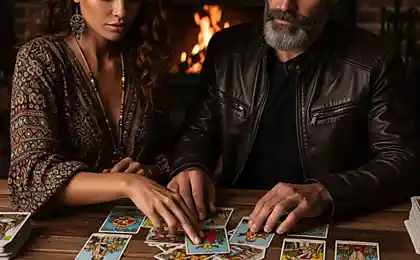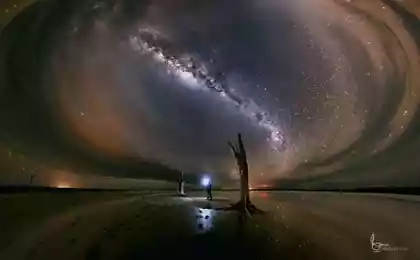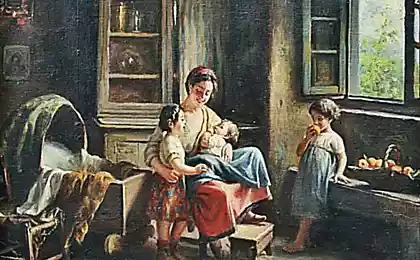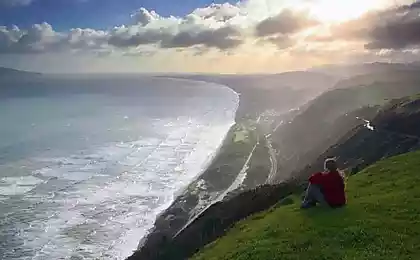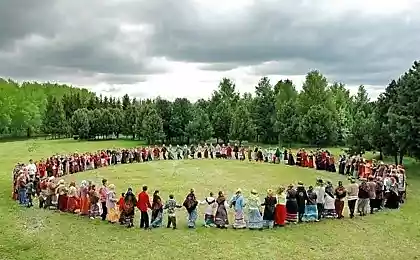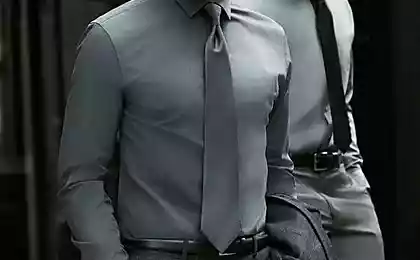720
Tarot—message of ancient civilizations

The modern market "mystical" service is full of offers different predictions: on the playing cards, runes, wax and so on. Especially popular with the current "wizards" predicting the future using the deck of Tarot cards. However limited the opportunities only Tarot predictions?
Maps – symbols
To answer this question, it will be interesting to look back in history and talk about the semantic content of Tarot cards, a system of symbols, a deck of 78 cards. They are divided into major Arcana – the trump cards, usually 22 cards and the minor Arcana – four suits, usually 56 cards. The word "lasso" comes from the Latin arcanus, meaning "secret", "unknown", "sacrament".
Classic, the most popular option for high Arcana are the cards "the Fool" ("Jester"), "Mage", "Cleric", "Empress", "Emperor", "the Hierophant" ("high Priest"), "Lovers" ("Choice"), "Chariot", "Justice" ("Justice"), "Hermit", "Wheel of Fortune", "Force", "the Hanged man", "Death", "Temperance" ("Time"), "The devil", "Tower", "Star", "Moon", "Sun", "the last judgment" ("Judgment"), the "World".
The minor Arcana: wands (sticks, staves, sceptres); swords; chalices, cups, discs, coins (Pentacles, denarius). Thus, in minor Arcana and 14 cards in each suit. Four of them are card – shaped, or "card yard" (the"court"). They depict people: the king (Pharaoh); the Queen (lady Sybil); the Prince (knight, cavalier, horseman); page (Princess, Jack, the Herald). The remaining 10 cards of the suit – point, from one point to 10. Odnakovi card is aces.
A bit of history
In Europe, Tarot cards trace their history back to the XIV-XV centuries. So, we know that in 1450 a similar deck was invented in Milan the Visconti family and Sforza. The surviving fragments of these cards was the prototype of the modern deck. Extant Tarot cards those times are made for the aristocracy luxury pictures of handmade.
In 1465 there was a deck Tarocchi Mantegna, whose structure is based on the Kabbalistic division of the Universe known as the 50 Gates of Bina. In a deck of 50 cards: five sets or suits (the vault of heaven, and the Foundations of virtue, Science, Music, Social status), 10 cards each. Some of the images on modern Tarot cards (Senior and minor Arcana) was was taken from the deck Tarocchi.
Sometimes the history of Tarot trying to start with 1392, since there are dated this year recording, according to which the artist Jasmina Gringore was ordered deck of cards for the French king Charles VI the Mad. It is believed that some of the cards from it are still preserved in the Paris national library. However, these cards are handmade Northern Italian type produced in the late fifteenth century. So maybe Gringore for the king not ordered the Tarot and a regular deck of cards for card games.
Temples, priests, sects, legends...
Popular in the early twentieth century French theorist and practitioner of occultism, Papus in his "Key to occult Sciences" claims that the Tarot system developed by the Egyptian priests. When the Egyptian Kingdom was threatened with destruction, they are encrypted in the Tarot your secret knowledge to revive them in future centuries. English interpreter of the Tarot by P. Scott Hollander believes that the word "Tarot" comes from the Egyptian words tar, "path" and ros, "a Royal", that is "a Royal way of life."
There is a legend that in Ancient Egypt, the temple was built with 22 rooms, where the walls adorned with symbolic paintings, which originate major Arcana of the Tarot. This legend corroborates the theory that Tarot cards comes from the vignettes of the Egyptian book of the dead. Pictures of it actually applied on the walls of sacred structures – tombs.
There is another wonderful legend. Like many years ago, people of high consciousness found that the world began to have flooded those who are not able to perceive the wholeness, then there is no love for the Earth and its nature. There was a danger that the Almighty powers that doeth the common good, can change his destiny and destroy the planet, that secret knowledge is not horrible to the unworthy. So the higher minds, guided by their wisdom, have codified all this knowledge and great technology in the images of 78 cards. The sages gave the cards to the travelers-Gypsies, who were unaware of the hidden in the Tarot of the great ancient mysteries.
Some researchers believe that Tarot cards is a record of the secret teachings of the various underground religious groups. One such group was the Gnostics – a sect of late antiquity, reputed to be heretical because of the spiritual beliefs of its adherents. To avoid persecution the Gnostics were forced to keep their faith in secret.
A simple divination?
The famous Russian traveler, Theosophist and unknown historian Helena Petrovna Blavatsky, drawing Parallels between Hinduism, Buddhism, Kabbalah and Tarot, came to the conclusion that the 22 major Arcana of the Tarot – it's actually the shape of the universal Tree of Life, that is the Foundation of many ancient religious systems. Another classic of occultism, Eliphas Levi, wrote: "the Student, devoid of books, had he Tarot cards and learn to read them, would for a few years to surpass the science and to talk about all possible subjects with incredible art and a tireless eloquence" (E. Levi. "Dogma and ritual of high magic").
To his way of thinking, the Tarot cards present hermetic, Gnostic and Kabbalistic symbolism, since the early Italian Renaissance that gave birth to the Tarot, was a time of great intellectual activity. Therefore, Hermeticism, astrology, Neoplatonism, Pythagorean philosophy and heterodox Christian thought that flourished then, could leave their mark in the symbolism of the Tarot. Eliphas Levi was the first person to measure the 22 trumps with the Hebrew letters. They are, according to the hermetic tradition, in turn is correlated with astrological, alchemical and other mystical symbols. This gave impetus to the formation of the Tarot not only as a method of divination, but also as a powerful tool for the development of magical rituals in General.
A significant contribution to the study of this field is made by Aleister Crowley, one of the most famous occultists of the XIX-XX centuries. Crowley is the author of the "Book of Thoth", the fundamental work devoted to the symbolism of the Tarot and the Kabbalistic and astrological correspondences. Deck, the "Thoth Tarot" created by Crowley in 1944 in collaboration with artist Frieda Harris, the preference for thousands of theologou-professionals, Amateurs and collectors throughout the world.
According to the American Association of the Tarot, among professional theologou deck "Tarot of Thoth" takes the second place in popularity after the "Tarot Rider-Waite".
Tarot cards are of interest not only within the framework of esotericism, but also in the traditional of practical psychology. After Swiss psychologist Carl Gustav Jung (student of Freud) noticed in his work that the symbols of the Tarot coincides with the developed system of psychological archetypes, many psychoanalysts began to use the Tarot deck to interpret the mental States of their clients.
The tool of self-discovery
Tarot Deck Visconti-Sforza
Tarot cards is an invaluable tool in any kind of problems and awakening the creative possibilities of man. Sometimes we can't see reasonable alternatives to the circumstances of his own life, because it is too deeply immersed in misery and trouble and thought about them. But the simple scenario (one or three cards) helps us to abstract from external influences and from unwanted soul-searching and completely to concentrate on the existing question.
Tarot cards allow you to find a more rational way out, which we never knew existed, show us the situation in a completely different light, so that we begin to see it from an unexpected side. Tarot cards reveal the hidden meaning of events and require extraordinary actions, leading to victory over fate.
Thus, we can conclude that divination by Tarot is only a byproduct of working with them. Thanks to its rich of esoteric, philosophical, psychological and astrological correspondences Tarot deck is a powerful tool for self-discovery and spiritual development.
Evgeny NESTERENKO
source
Source: /users/93
